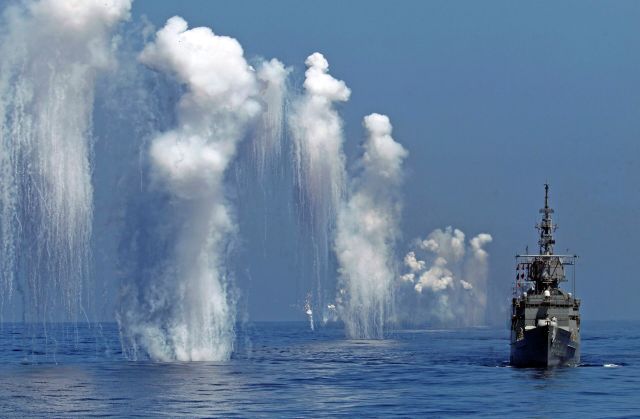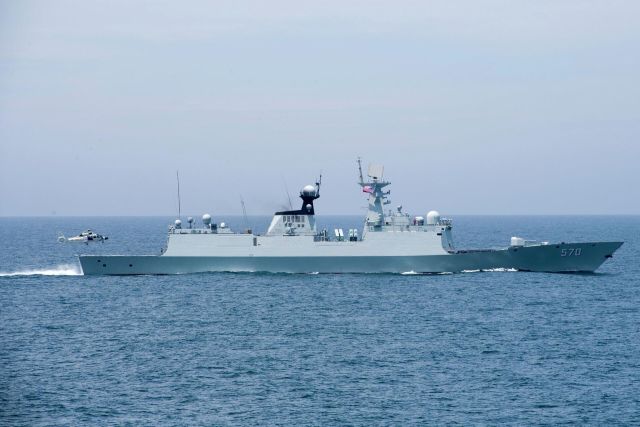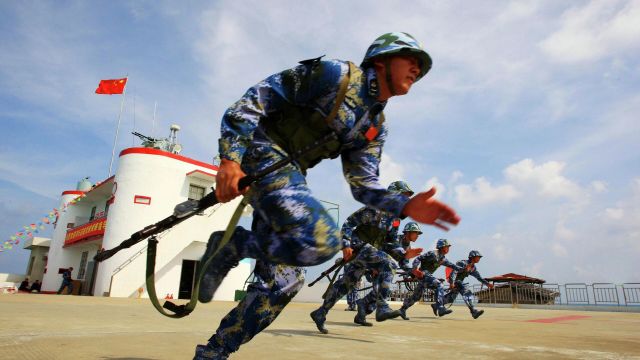MOSCOW, 11 Sep — RIA Novosti, Andrey Kotz. Washington has announced another $1.1 billion package of military aid to Taiwan. The White House is confident that the next arms shipments will force Beijing to retreat from the island. However, the Chinese authorities are not going to change their plans. About what is happening in the region — in the material of RIA Novosti.
Diplomatic confrontation
Americans are consistently raising rates. In early August, the Speaker of the House of Representatives Nancy Pelosi visited Taiwan, then a whole delegation of lawmakers. Beijing responded with demonstrative military exercises near the island. The position of the PRC is unchanged: no one has the right to judge the status of Taiwan, except the Chinese themselves.
And so the White House announced another package of military assistance to Taipei. According to information from the Pentagon, these are about 60 AGM-84K Harpoon Block II anti—ship missiles, about 100 AIM-9X Block II Sidewinder air-to-air missiles, as well as radar stations of air defense systems. Earlier, the media reported on the transfer of several hundred American instructors to Taiwan.
"The weapons will strengthen Taiwan's security and contribute to maintaining political stability, military balance and economic progress in the region," Washington stressed.

Annual military exercises Han Kuang, Taiwan Image Source: © AP Photo / Wally Santana
Beijing responded immediately. Foreign Ministry spokeswoman Mao Ning said there was a gross violation of the "one China" principle and three joint Chinese-American communiques. The PRC will take "decisive and weighty measures to reliably protect its sovereignty and interests."
Mao Ning blamed the White House for increasing tensions in the Taiwan Strait. No force will prevent the full reunification of the country, she added.
A blow to logistics
Washington once again confirmed its readiness to defend its Pacific ally, and the deputy chief of Staff of the US Air Force, Clinton Heinot, even threatened Beijing with a strike on logistics centers and channels in case of aggression against the island. According to the general, the importance of logistics was shown by the military actions in Ukraine. And the United States, he stressed, has everything for a strike.
Earlier, another high-ranking military officer, Chairman of the Joint Chiefs of Staff of the US Armed Forces, General Mark Milley, suggested that Taipei carefully study the actions of Ukraine and learn tactics used against the Russian army. According to Millie, you need to be ready to put the entire population of the island under the gun.
"I think China has a strategy in response to all these actions," says Dmitry Mosyakov, a political scientist and orientalist. — They have their own approach, the USA has its own. It is very difficult to say which is more correct and successful. The Americans are trying to influence the internal situation in China, to demonstrate to Southeast Asia that it is they who dictate the agenda in the region. In the current global crises, Washington cannot allow Beijing to stay on the sidelines. The basis of the strategy is to draw the Chinese into the conflict until they are quite ready."
"Serious losses"
It is extremely doubtful that Washington wants an open conflict. Last spring, the US Air Force Command declassified the results of the war games in which American aircraft opposed Chinese during a hypothetical invasion of Taiwan. The simulation clearly showed that the PLA cannot be defeated with a rush. And although in the end the States prevailed, the losses were catastrophic.

Huangshan missile frigate of the Chinese Navy in the South China Sea Image Source: © Photo : U.S. Navy
According to the legend of the games, in 2030, Beijing began to solve the Taiwan issue by force, involving aviation and navy in a large-scale amphibious operation. Taipei asked for help. The Pentagon, having concentrated impressive forces in the South China Sea, reacted immediately. In the simulation, they practiced exclusively actions from the air with the support of the Navy and ground forces.
In previous years, the Americans have been defeated over and over again. In 2018 and 2019, Washington used all available forces and means. Nevertheless, planes and drones have not managed to crack the "forbidden zones" (Anti-Access/Area Denial, A2/AD). Chinese fighters and air defense systems, both land-based and ship-based, reliably closed the sky over Taiwan and repelled attacks, and expeditionary units took control of the island.
A trick helped to win last year's simulation: the maneuvers were modeled not in the present, but in the future, which made it possible to use not only existing, but also promising samples of aviation equipment and weapons, which are mostly still only in the drawings. As a result, the Air Force defeated the Chinese troops and blocked the surviving units. But at a great price.
The Pentagon does not specify how serious the damage is. However, it is obvious: in real life, the conflict will be even scarier.

